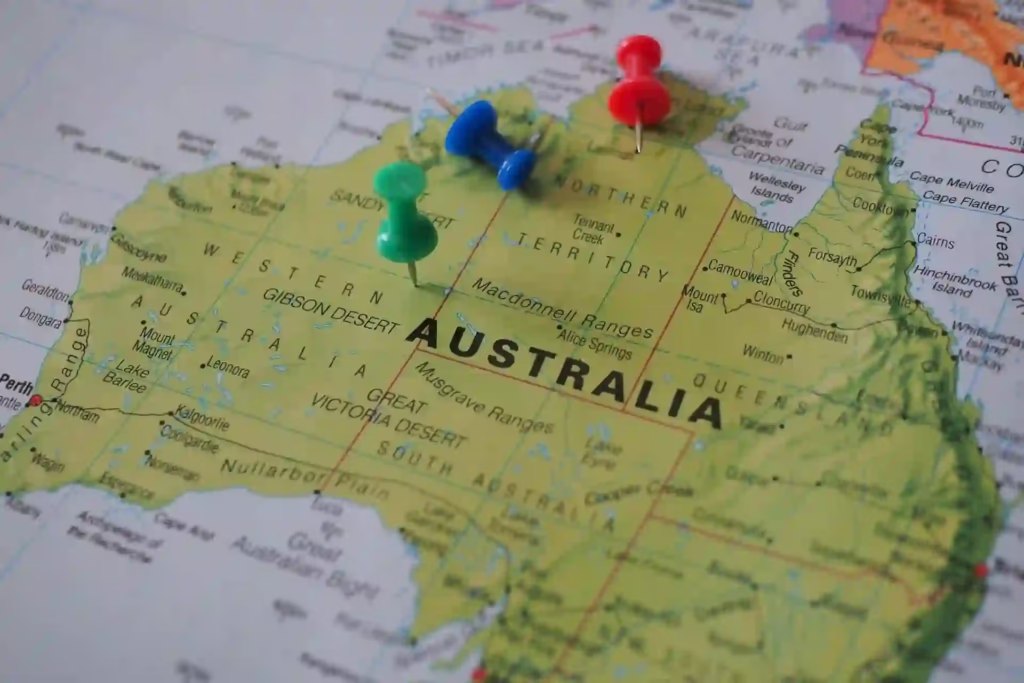Migrating to Australia as a skilled worker is one of the most attractive pathways for professionals seeking better opportunities, quality healthcare, high living standards, and permanent residence. Australia’s economy consistently demands qualified professionals across various sectors, and the government welcomes skilled migrants who can contribute to its workforce.
If you’ve ever wondered how to migrate to Australia as a skilled worker, this guide will walk you through the process, eligibility requirements, visa options, and profession-specific pathways for nurses, doctors, teachers, and families.
What is an Australian Skilled Visa?
An Australian Skilled Visa allows qualified professionals to live and work in Australia permanently or temporarily. The visa categories are designed to address labour shortages and attract individuals with expertise across healthcare, education, IT, engineering, and trade sectors.
According to the Department of Home Affairs, skilled migration visas are points-tested and designed for individuals with skills needed in the Australian labour market. With over 715,000 migrants projected in the coming years, there has never been a better time to explore this opportunity.
There are three main types of permanent skilled visas:
- Skilled Independent Visa (Subclass 189): This is a points-based visa that does not require you to have sponsorship by an employer, family member, or state.
- Skilled Nominated Visa (Subclass 190): This permanent visa requires nomination by an Australian state or territory government.
- Skilled Regional Visa (Subclass 887): The permanent stage for migrants who initially entered Australia on a regional provisional visa.
For temporary or provisional options, there are visas like the Subclass 491 Skilled Work Regional (Provisional) and the Subclass 485 Temporary Graduate Visa, which can later lead to permanent residency.
Tip: You can check if your occupation is on the Skilled Occupation List (SOL) provided by the Australian Government.
READ MORE: Apply for the 2026 Chevening Scholarship to Study in the UK
How to Migrate to Australia as a Skilled Worker
The process to migrate to Australia as a skilled worker involves several steps. Below is a simplified outline:
- Check Eligibility and Skilled Occupation List (SOL): Ensure your profession is listed under the Australian Skilled Occupation List. Fields such as nursing, teaching, engineering, and IT are always in high demand.
- Take the Online Migration Assessment: Complete an assessment to determine your points. A minimum of 65 points is required, based on qualifications, age, work experience, English proficiency, and adaptability.
- Skill Assessment: Submit your qualifications to the relevant assessing authority (e.g., Australian Nursing & Midwifery Accreditation Council for nurses, Australian Institute for Teaching and School Leadership for teachers).
- Submit Expression of Interest (EOI) via SkillSelect: Through the government’s SkillSelect portal, you declare your interest in applying for a skilled visa.
- You must get an Invitation to Apply: If your points score is high enough and your occupation is in demand, you’ll be invited to apply for a visa.
- Visa Application & Medical Checks: Provide documentation, undergo health checks, and precise character requirements.
- Grant of Visa: Once approved, you can move to Australia, work full-time, and even apply for permanent residency later.
How to Migrate to Australia as a Nurse from Nigeria
Nurses are among the most in-demand professionals in Australia. If you’re a nurse from Nigeria, the pathway is clear but requires specific steps:
- Qualification Verification: Apply for skills assessment through the Australian Nursing & Midwifery Accreditation Council (ANMAC).
- English Proficiency: Pass IELTS (minimum 7.0) or OET (Occupational English Test) as proof of English competency.
- Registration with AHPRA: As a nurse, you must register with the Australian Health Practitioner Regulation Agency (AHPRA) before practising.
- Visa Application: Apply for a Skilled Nominated Visa (Subclass 190), Skilled Independent Visa (Subclass 189), or Regional Provisional Visa (Subclass 491).
Tip: Nurses in Australia are often sponsored directly by healthcare employers, which can expedite the migration process.
How to Migrate to Australia as a Doctor
Australia also faces a significant shortage of medical professionals. Doctors, especially in rural and regional areas, are in high demand. Here are the steps to follow when migrating to Australia as a doctor:
- Verification: Apply through the Australian Medical Council (AMC) for assessment of your qualifications.
- English Test: Pass IELTS or OET.
- Specialist Recognition: If you are a specialist (e.g., surgeon, GP), you may need recognition from the Medical Board of Australia.
- Visa Application: Doctors typically migrate under Subclass 189 or 190 visas, though employer sponsorship is common.
According to the Australian Medical Council, doctors must complete bridging programs or supervised practice before full registration.
How to Migrate to Australia as a Teacher
Teachers, particularly in mathematics, science, and special education, are highly sought after. Here are the steps to follow to migrate to Australia as a teacher:
- Skills Assessment: Teachers undergo evaluation by the Australian Institute for Teaching and School Leadership (AITSL).
- English Requirements: Achieve high scores in IELTS or PTE.
- Visa Pathways: Teachers often qualify for Subclass 189 or 190 visas.
Tip: If you are a teacher with experience in rural or regional teaching, you may have higher chances due to shortages in those areas.
READ MORE: Move to the UAE on a Virtual Work Visa Without a Local Sponsor
How to Migrate to Australia as a Family
If you’re migrating as a skilled worker, your family can join you under your skilled visa. This includes your spouse and dependent children. Benefits that this visa route offers you include:
- Free Public Education: Children can access quality schools.
- Free Healthcare: Through Medicare.
- Pathway to Citizenship: Families can apply for permanent residency and citizenship together.
Some skilled visas (Subclass 189 and 190) automatically cover family members, while others (like Subclass 491) allow family sponsorship in regional areas.
Why Choose Australia as a Skilled Migrant?
Choosing Australia as a skilled migrant comes with numerous benefits that make it one of the most desirable destinations in the world. As a skilled worker, you have the opportunity to stay permanently in Australia, enjoy free family healthcare through Medicare, and access world-class education for your children.
Additionally, you also gain the ability to sponsor eligible relatives, creating opportunities for family reunification. With a clear pathway to Australian citizenship, as a professional, you can build long-term security while enjoying a high standard of living in one of the safest countries globally. According to the Australian Bureau of Statistics, Australia consistently ranks among the top nations for quality of life, healthcare, and education, and this further solidifies its appeal as a good destination for skilled professionals.
Frequently Asked Questions (FAQ)
What is the minimum IELTS score to migrate to Australia as a skilled worker?
You typically need a minimum of IELTS 6.0 in each band, but to gain more migration points, a score of IELTS 7.0 or 8.0 is recommended. Equivalent PTE or OET scores are also accepted.
Can I migrate to Australia without work experience?
It is possible, but having relevant work experience significantly increases your points and chances of receiving an invitation. Fresh graduates may qualify under certain visas, like the Temporary Graduate Visa (Subclass 485).
How long does it take to migrate to Australia as a skilled worker?
Processing time varies and is dependent on the visa subclass and the completeness and accuracy of your application. On average, it takes 8–12 months for most skilled visas.
Can I bring my family with me on a skilled visa?
Yes. Skilled visas such as Subclass 189, 190, and 491 allow you to include your spouse and dependent children in your application.
Is age a factor in skilled migration?
Yes. Applicants between 25 and 32 years old earn the highest points. However, you can apply up to the age of 45.
Do skilled workers get free healthcare in Australia?
Yes. Permanent skilled visa holders (and their families) are covered by Medicare, Australia’s free public healthcare system.
Can skilled migration lead to citizenship?
Absolutely. After holding permanent residency for a specific period (usually 4 years with at least 1 year as a permanent resident), you can apply for Australian citizenship.
READ MORE: Top 6 Countries granting Nigerians automatic Citizenship by Birth
Migrating to Australia as a skilled worker opens the door to countless opportunities, from stable employment and healthcare benefits to permanent residency and citizenship. Whether you are a nurse from Nigeria, a doctor, a teacher, or a professional in another field, Australia’s skilled migration program offers multiple pathways to secure your future.
The process may seem complex, but with the proper preparation, checking the occupation list, completing a skill assessment, and choosing the right visa, you can successfully navigate your journey to living and working in one of the world’s most desirable countries.
Discover more from Leaving Nigeria
Subscribe to get the latest posts sent to your email.





